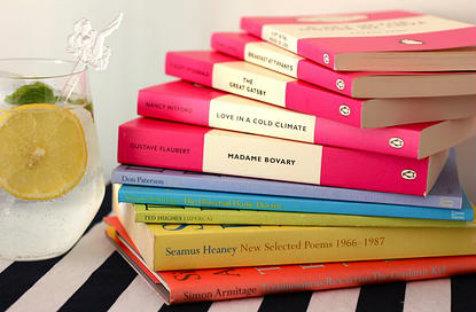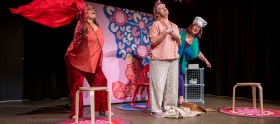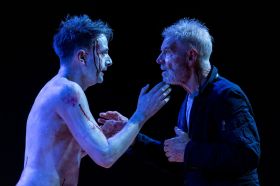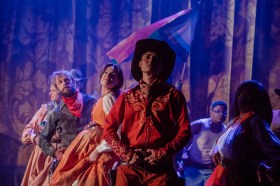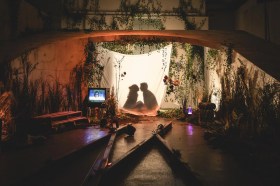In true writerly style, the QUT Literary Salon failed to meet its five o’clock deadline.
Tucked away in a snug little bar on Kelvin Grove campus, the event’s hosts eventually kicked things off closer to five-thirty, allowing every writer in the room to visit the bar at least twice. I say this not to demean the event in any way; I merely wish to pay tribute to its quite typical, literary credentials.
The venue of choice, Room 60, is as close to a writers’ den as QUT gets: large chalkboards, old books, rustic overhead lamps. You could almost see the creative juices gently condensing on your glass of wine. It’s so rare to find a venue like this so fit for its subject, and for these budding writers, it provides the perfect platform for sharing their work. Quite literally too – the venue sports a stage, a microphone and cute, dimmable lighting.
Now, I know what you’re thinking: this is lovely and all, but writers can’t perform. They’re not actors, they’re reclusive types who shy away from the spotlight, drowning themselves in self-doubt, liquor and regret. But despite what cultural legend may have taught you, many of us do indeed talk. We even deign to socialise on occasion. The hosts of the night were testament to this, with everyman Ben Goodfellow confidently working alongside the quirky Kelly Palmer, whose offbeat jokes ignited many rounds of laughter from the crowd.
As for the stories themselves, the students on show teamed up with a published author, Chris Somerville, to entertain us with a set theme. For this month it was ‘Embark’: an apt choice for their first meeting. The word immediately prompts images of long journeys and epic adventures, but what ensued was more appropriate to our intimate surrounds. Each narrative was very personal, very small in scale, each with a lively, yet unexpected, maturity of voice. Of particular note were Emma Makepeace, whose non-fictional account of child-rearing in Malawi left us all unsettled, and the modest Grace Finlayson, who led the series with a curious glimpse at her novel-in-progress.
What made the evening, though, was the atmosphere. As we sat silently in the bar, sharing these stories over drinks, I could not help but feel privy to something special, something secret. For a moment, we were all conspirators, plotting to find that unique, undiscovered voice in the next generation of writers. So perhaps I can forgive the Salon for its tardiness and instead raise a glass to its literary triumph.
Rating: 4 ½ stars out of 5QUT Literary Salon
11 September
Brisbane Fringe Festival
brisbanefringe.com
1 – 14 September
The QUT Literary Salon is a new monthly reading series, featuring short fiction from some of the university’s most talented creative writing students, held on the second Wednesday of the month at 5pm. Venue: Room 60, 22 Carraway St, Kelvin Grove.

